Snap Back to Reality, Ope There Goes Gravity
A night after scoring more runs than in any other game all year, the Royals went back to being, well, the Royals.
The Royals offense didn’t exactly look competent on Wednesday night, but they found a way to score some runs. Actually, they found a way to score a lot of runs. But last night they ran into a great pitcher in…wait, hang on, I’m getting word that they faced Taylor Hearn. That’s kind of mean to Hearn, but he came into the game with a 5.05 career ERA and a 6.53 ERA this season. There were some signs that he was better than that number with a bunch of strikeouts, but he also had allowed 28 hits in 20.2 innings, which is…bad.
And the Royals got one hit off him in five innings.
You know you were thinking it too. It was just another anemic output from the Royals offense that was a perfect example of what I wrote about on Wednesday. Hearn wasn’t doing anything special. Just look at the result pitches from Hearn.
So many right in the heart of the plate and they simply didn’t do much of anything with them. Hearn only got five swings and misses in this game, but they had just two hard-hit balls against him. One was a nice swing from Sebastian Rivero that was a barrel but didn’t travel and the other was a long flyout from Michael A. Taylor that I’d go to my grave saying would have been a homer last season but the ball is a used kitchen sponge this year, so not so much. And that’s it.
Sure they pieced together three straight singles in the eighth inning after Taylor Clarke gave up a homer in the bottom of the seventh, but it was a meaningless run, especially once Josh Staumont gave up a triple and then threw a wild pitch that scored the runner. I’d love to give you more analysis on the offense, but what is there to say? They aren’t good and they’re not doing anything with pitches they should do something with. It’s a bad combination that lends itself well to being unable to score some runs.
That said, there was at least something interesting about this game because they had a young pitcher with minimal experience on the mound and that’s always something I like to break down.
I was pretty excited to see what Jonathan Heasley could do in his return to the big leagues. I wrote yesterday that I haven’t exactly seen him at his best in the big leagues and I’d go as far to say that I haven’t been impressed with him at all. I think last year you could chalk that up to being a bit worn down at the end of a full season after not pitching in 2020 at all, but getting to see him in mid-May should be him in top form. And all the reports out of Omaha were great for him. He had 30 strikeouts and six walks in 26.1 innings with just 19 hits allowed.
So the scouts loved him. The stats loved him. All that was going for him. And yet, he was kind of underwhelming again. Okay, that’s not entirely fair because there was a lot of good to build on from this outing, but I just want to see what I and others have seen from him in the minors at some point. Let’s break it down.
I thought his stuff was better than any of his three starts at the big league level last season. He started the game using three pitches. Usually a pitcher might wait until the lineup turns over to introduce a third pitch, but Heasley either felt like he needed a better mix or that he just likes all three of his pitches. But in the first inning, he started off the leadoff hitter with a fastball. Then he went to a changeup on the number two hitter. And then a curve to start things off with the number three hitter. I think it would probably be beneficial to save one of those for the second time through the order, but I don’t have a problem with it for a guy making his first big league start of the year.
And he was solid in the first, which was ironically the inning he gave up his only run. But he got BABIPed straight to a first inning run. A 79.4 MPH single to third started things. Then he got a weak grounder at 46.7 MPH to move the runner to second. Then he walked Corey Seager, which was probably not a bad idea. And after a flyout got him to two outs, Kole Calhoun just flicked a ball to left at 61.2 MPH. This is a great example of why strikeouts are better than batted balls, no matter how bad you make a hitter look, but it’s also hard to knock a guy for getting that much weak contact.
Overall, though, I just think Heasley did something a lot of young pitchers do and gave the opposing team a little too much credit.
That’s just an awful lot of nibbling. I loved how willing he was to throw his fastball inside to the Rangers, but he just needed to be a little closer to the plate with a few of them. Take a look at where his swings and misses came from:
That shows that the stuff is good enough to get those whiffs in the zone. But when he’s spending so much energy trying to get chases on pitches that big league hitters don’t generally chase, you’ll see what we saw last night and that’s way too many pitches and walks that weren’t necessary. Pitch five in the chart below (which was really the sixth pitch, it’s missing one for some reason) is a perfect example.
It was a 3-2 pitch after he’d gotten a called strike at the top of the zone and a whiff on a changeup at the bottom of the zone. The changeup was the pitch before the curve. There are two schools of thought here. The first is that the changeup theoretically slowed down Brad Miller’s bat and because of that, a fastball, even in the same spot would make sense. The second is that throwing something like a curve with a little bend is a good pitch to throw. I’m not so concerned with the actual pitch he threw, but the spot. He has a good curve, but he put it in a spot that was never going to get a swing. Did he just miss? Was he trying to be too fine? I don’t know, but it was bad execution either way.
The other PA I want to look at is this one against Eli White in the fourth inning. It was the second to last of the night for Heasley and while he walked the next batter, I thought this one illustrated something to work on and get better from.
You can see what he was trying to do. He wanted to get inside on White, which isn’t the worst idea, but White’s weak spot is actually low and away. I appreciate that Heasley is more than willing to throw the changeup right on right, but I would love to see him work it to the lower third portion by the left-handed batter’s box more often if he’s going to use it against right-handed batters. With a runner on first and one out, he could have absolutely used that part of that plate. Right on right changeups away and down have resulted in ground balls in 53 out of 90 batted balls this season. You obviously can’t know that’s what would have happened, but obviously, the odds were pretty good that it would have. Heasley, once again, just didn’t execute.
Here’s the good news. It sounds like he knows he needs to just go after guys. After the game, he said:
“I was just kind of nibbling a little bit, especially with my offspeed. Just maybe trying to be too fine. Honestly, everything’s better when I just throw the crap out of it and throw it just like my fastball. So that’s just kind of mentally focus, dial it in a little bit and just know that that third inning was really good and just build off of that. That needs to be my style all the way through.”
I want to see more of him without a doubt. I feel like I’ve spent an awful lot of digital ink on what was wrong, but he had his moments as well. I loved the look of his changeup and he got a ton of whiffs, 13 to be exact. Eight of them came on the changeup with four on the fastball and one on the curve. The Rangers put 13 balls in play and just five were hit hard. That’s a rate of 38.5 percent, which is roughly in the 61st percentile among pitchers. I will take that all day long. I just want to see a little less nibbling and a little more strategic use of location. I thought his stuff looked like like big league stuff, but his execution was lacking. And that’s okay as long as he learns from it and improves from here.
Now it’s on to Colorado for the Royals where maybe they can get some artificial offense going. I said before the road trip that they needed to go 5-4 to come home with a shot at being at least mildly competitive. It’s a big homestand for it with five against the White Sox and three against the Twins. I don’t harbor any real hope that they can turn this around enough to play a truly meaningful game the rest of the year, but if they’re going to surprise me, they likely need a sweep in Denver and a 5-3 homestand at worst. The plus side is that’s the beauty of it still being so early. You can at least concoct unlikely scenarios where the season isn’t already in the toilet. But time is running out before those scenarios get even tougher.

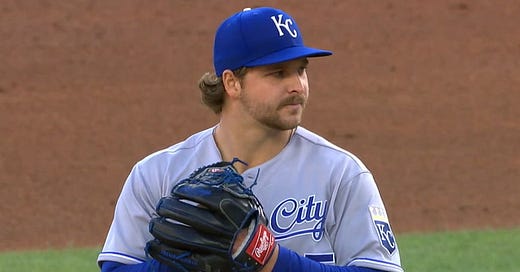


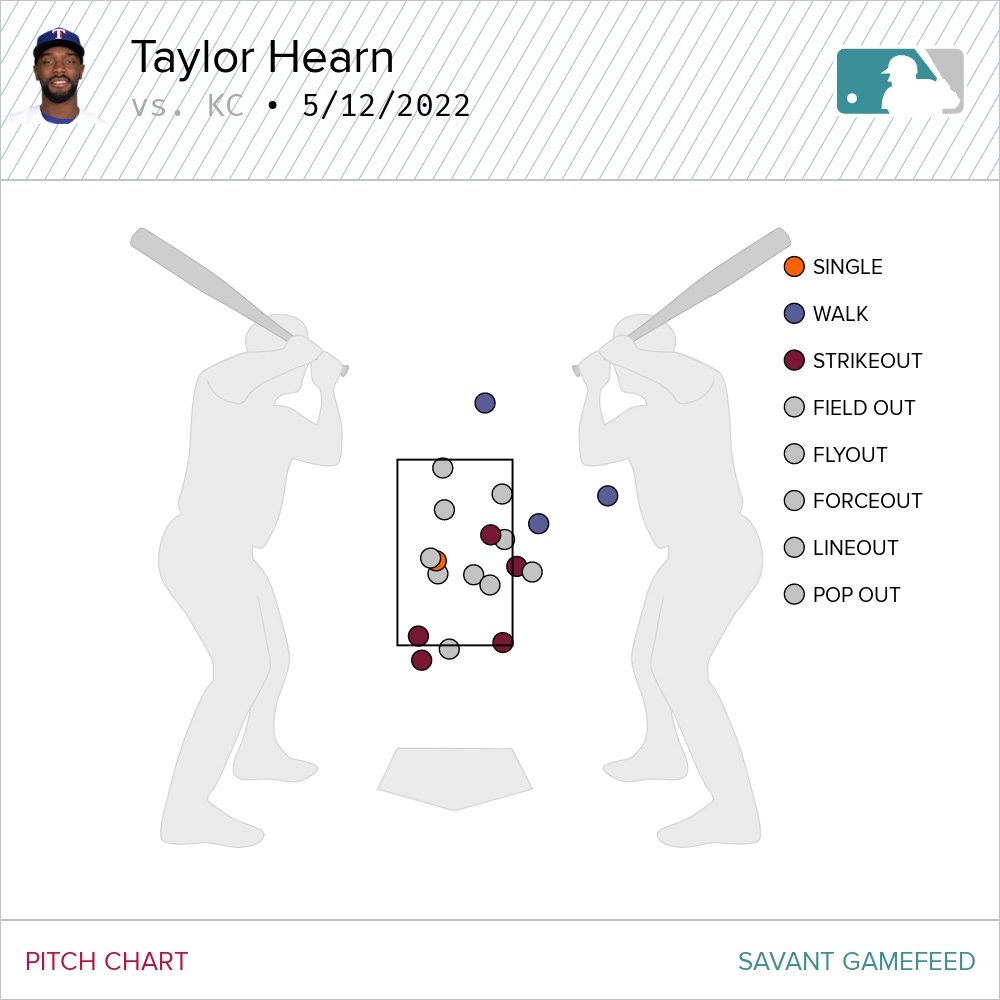
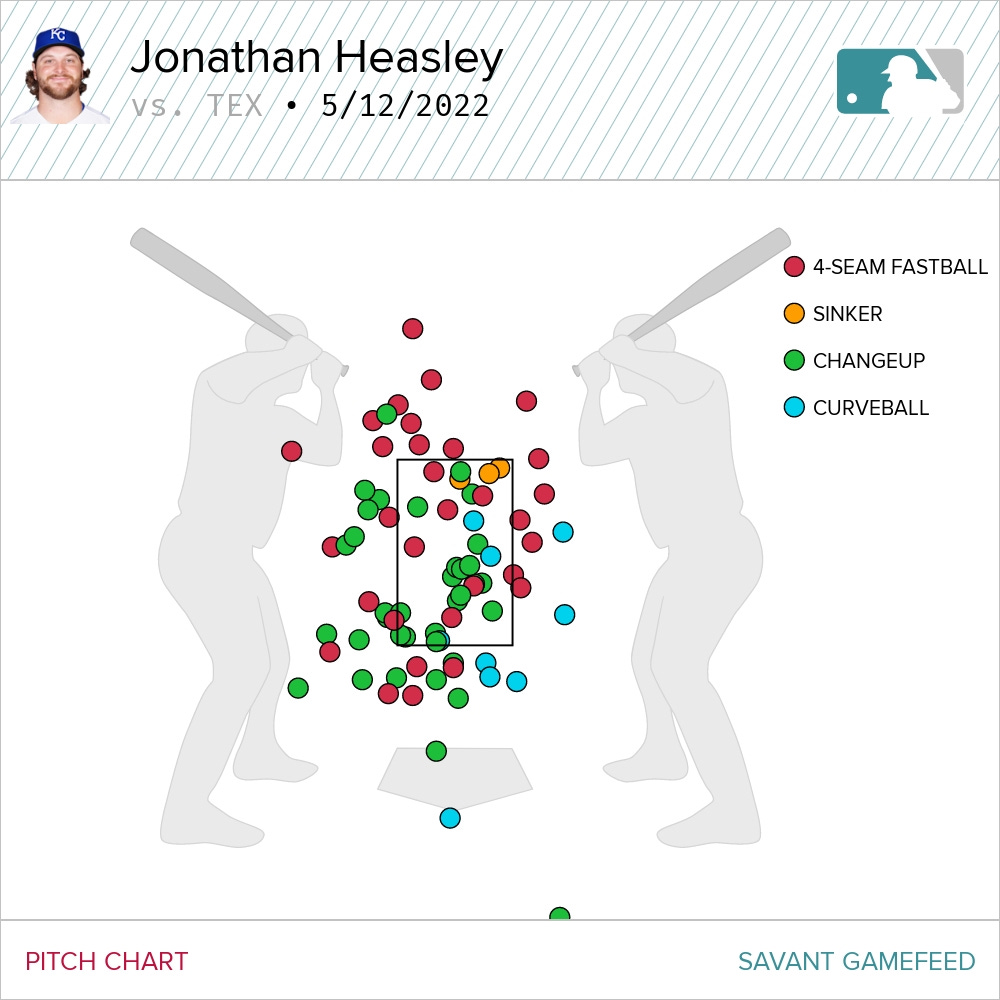
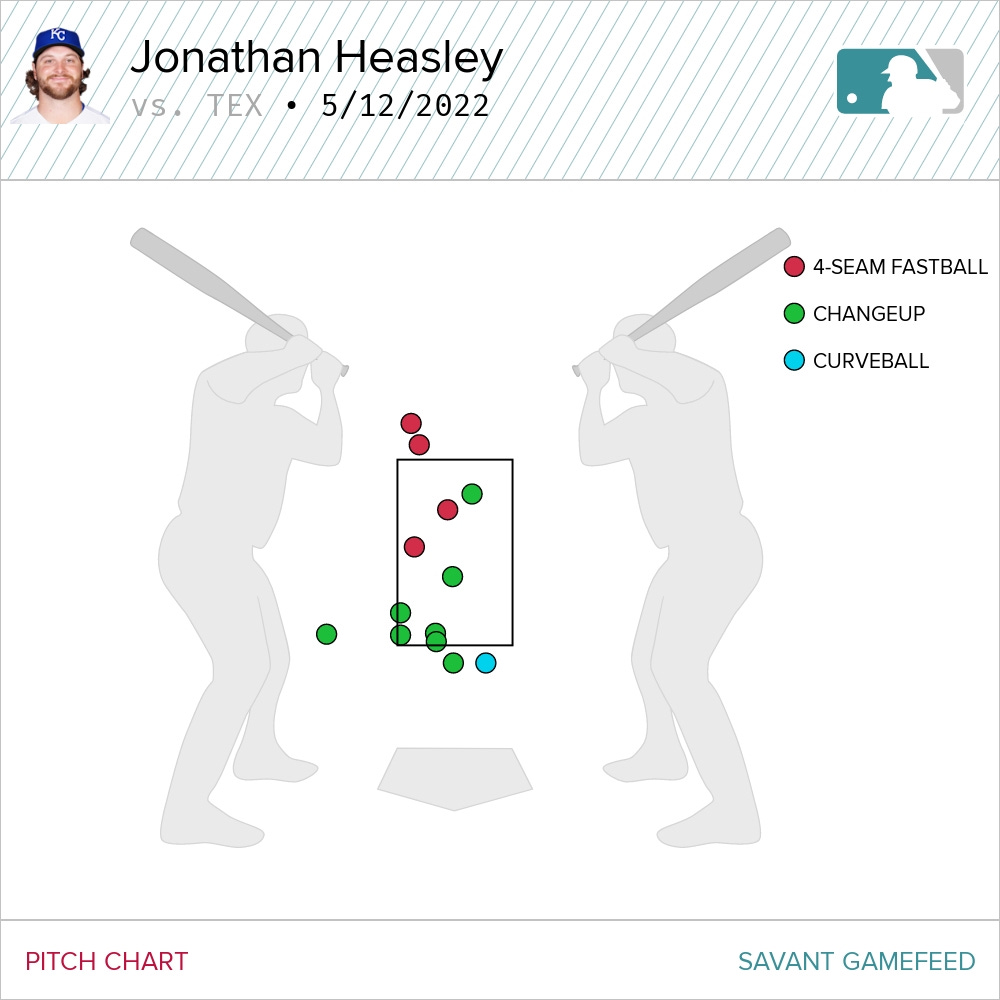
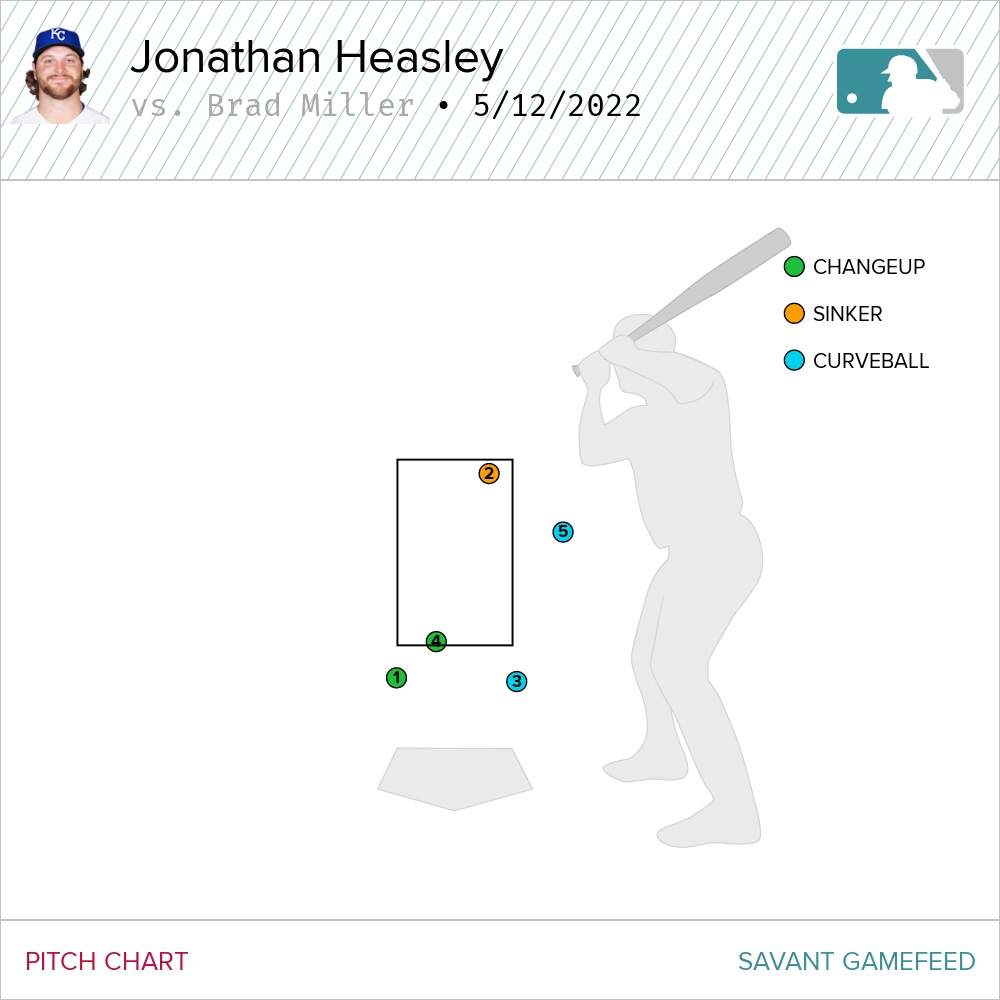

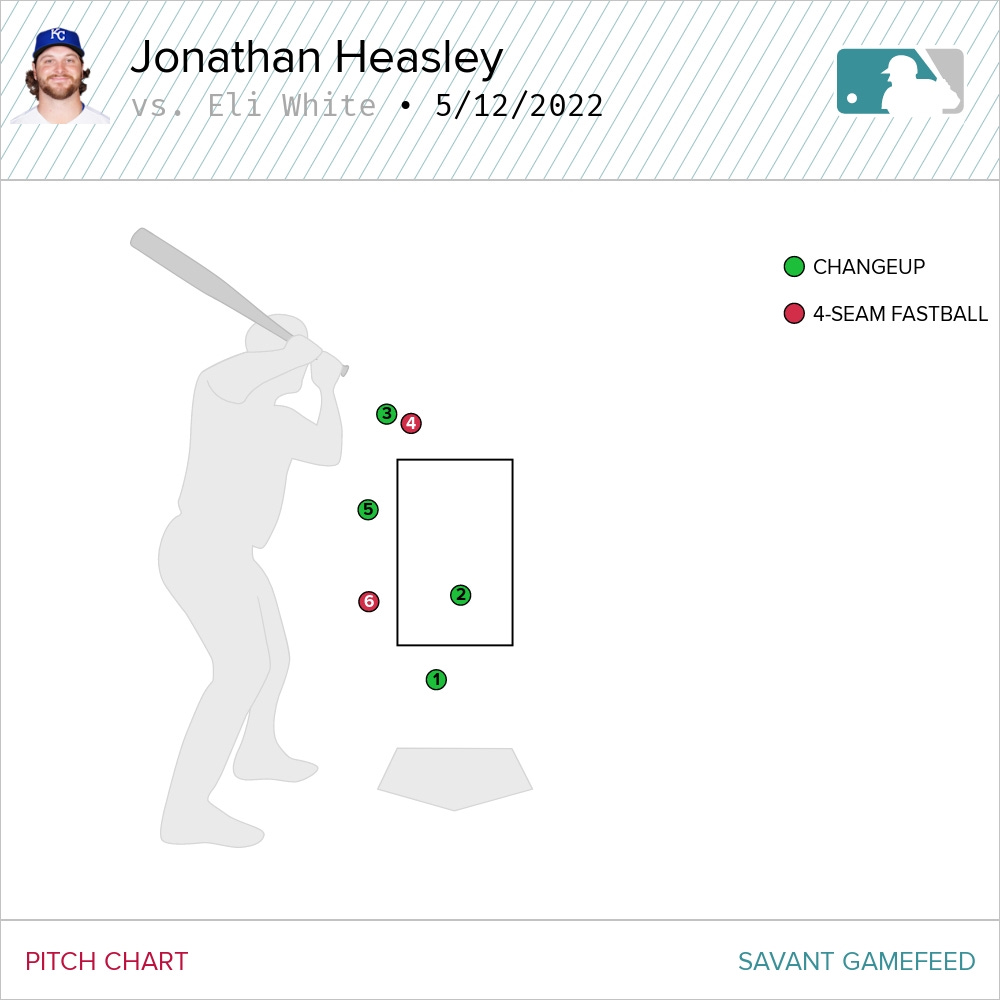
All the Royal pitchers nibble way too much. They rarely get ahead of hitters and when they do they then frequently lose them by nibbling for the strikeout. This must be a team pitching philosophy cause they all do it. The pitchers we face seem to always be ahead in the count and then we swing at a pitch 6 inches off the plate. The secret to the opponents success seems to be always getting ahead of our hitters, forcing them to be defensive.
Heasley didn't look too bad, but like he said, he was just nibbling too much.
I am halfway ashamed to admit I didn't watch any of last night's effort in futility. Stl. Blues and NHL hockey seemed much too interesting to me last night. It is becoming harder and harder to watch this team. Wednesday night's game they only scored 8 runs because most of them scored because of Rangers errors. I hope you are right about change coming soon! Good writing as usual, David!!!!